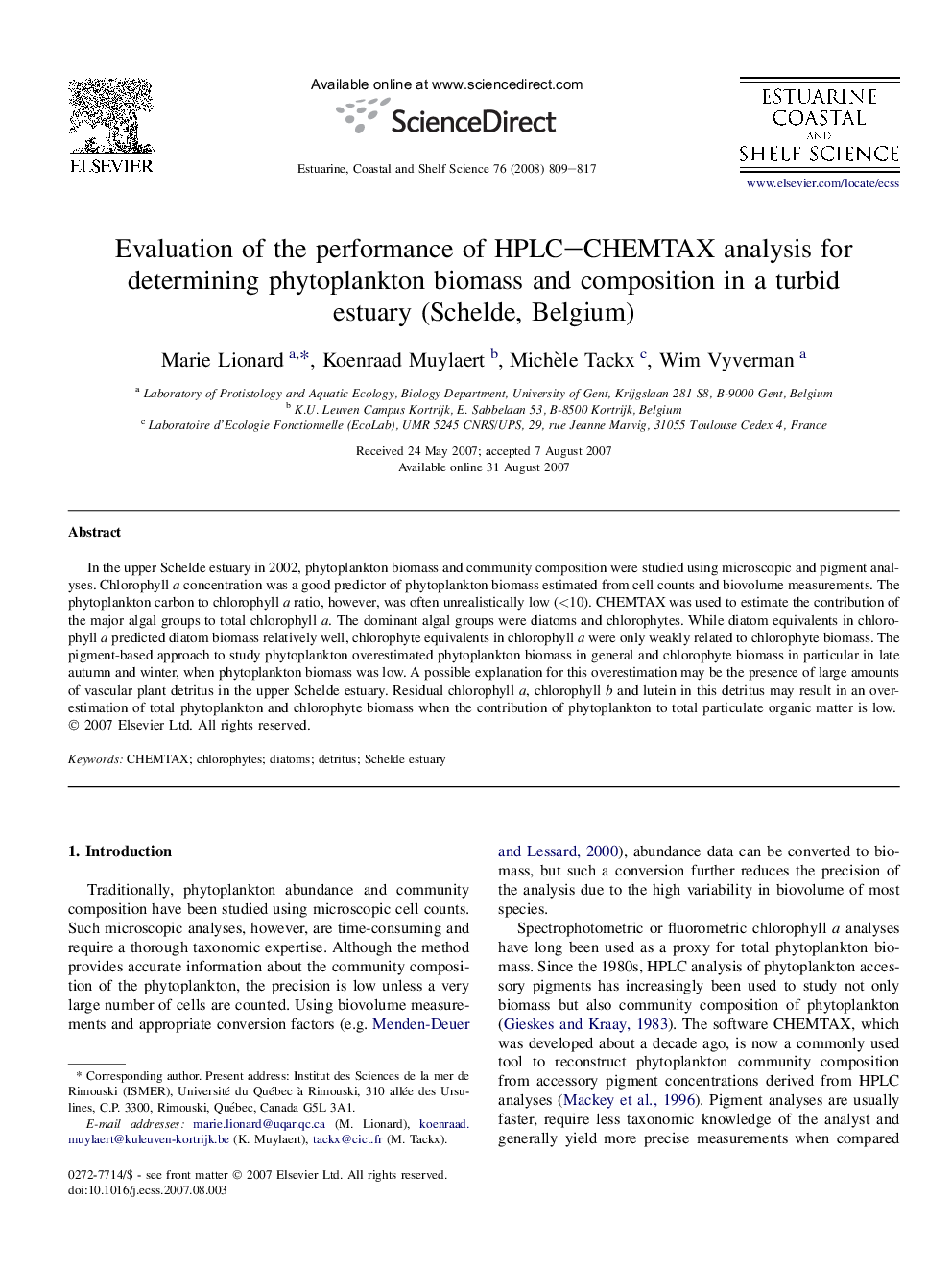| Article ID | Journal | Published Year | Pages | File Type |
|---|---|---|---|---|
| 4542132 | Estuarine, Coastal and Shelf Science | 2008 | 9 Pages |
In the upper Schelde estuary in 2002, phytoplankton biomass and community composition were studied using microscopic and pigment analyses. Chlorophyll a concentration was a good predictor of phytoplankton biomass estimated from cell counts and biovolume measurements. The phytoplankton carbon to chlorophyll a ratio, however, was often unrealistically low (<10). CHEMTAX was used to estimate the contribution of the major algal groups to total chlorophyll a. The dominant algal groups were diatoms and chlorophytes. While diatom equivalents in chlorophyll a predicted diatom biomass relatively well, chlorophyte equivalents in chlorophyll a were only weakly related to chlorophyte biomass. The pigment-based approach to study phytoplankton overestimated phytoplankton biomass in general and chlorophyte biomass in particular in late autumn and winter, when phytoplankton biomass was low. A possible explanation for this overestimation may be the presence of large amounts of vascular plant detritus in the upper Schelde estuary. Residual chlorophyll a, chlorophyll b and lutein in this detritus may result in an overestimation of total phytoplankton and chlorophyte biomass when the contribution of phytoplankton to total particulate organic matter is low.
